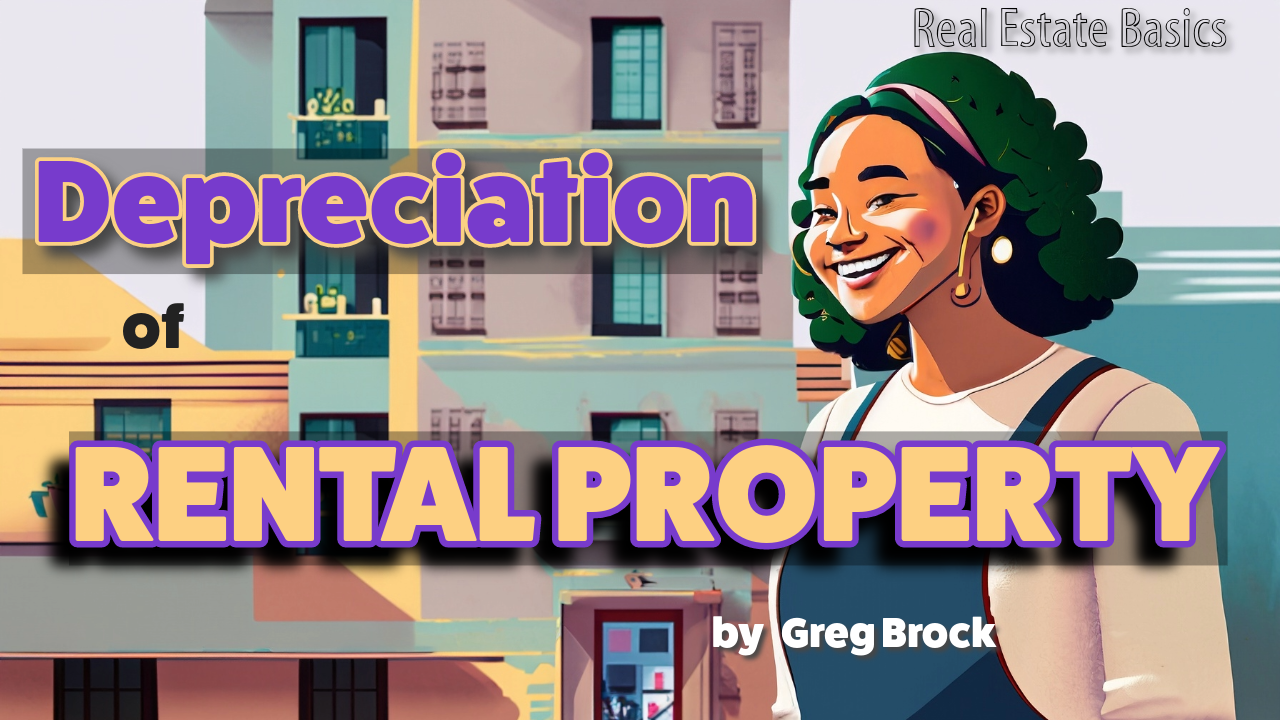This article introduces a strategy aimed at helping income property owners lower their federal income tax, known as “Depreciation of Rental Property.” Depreciation involves utilizing IRS rules to gradually recover a property’s cost basis over a span of 27.5 years, leading to an annual reduction in taxes.
For instance, consider a person who purchases a four-plex apartment building for $2,000,000 and rents out all of the units. If the county assessor values the land at $500,000 and the improvements at $1,500,000, the owner has the option to depreciate the entire value of the improvements over a span of 27.5 years. This translates to an annual deduction of $54,545 from their federal taxable income. ($1,500,000 ÷ 27.5 = $54,545.) If the owner actively manages the property, the depreciation can be subtracted from ordinary income. So, if the buyer’s taxable income was $100,000, the depreciation would reduce it to $45,455.
Tax laws governing depreciation are detailed and complex, and it is advisable to consult a tax professional to assist in depreciating rental property. The following provides a general overview of depreciation principles along with practical examples. By the time you finish reading, you’ll have a clearer understanding of whether depreciation is a tax strategy worth exploring further.
Understanding the Basics: Depreciation refers to a mechanism for recovering the cost or basis of an income-producing property. This process spans the expected useful life of the property. With rental properties, the useful life is typically 27.5 years. Depreciation applies to most tangible property types, excluding land, and requires meeting specific criteria, such as ownership, business or income-related use, determinable useful life, and a lifespan exceeding one year.
Can You Depreciate Land? No! You cannot depreciate the cost of land because land does not wear out, become obsolete, or get used up. The cost of land generally includes the cost of clearing, grading, planting, and landscaping.
Depreciation Timeline: Depreciation commences when a property is ready for use in trade, business, or income production. This means that rental property depreciation initiates once the property is prepared and available for renting. The IRS provides tables to calculate partial-year depreciation. The process concludes when the cost basis is fully recovered or when the property is retired from service, whichever comes first.
Understanding “Basis”: Calculating the depreciation deduction requires determining the property’s “basis,” which is influenced by its cost or other basis. The rules can be complex, but here are some foundational principles:
- For purchased property, the basis is the cost, plus additional expenses like sales tax, freight charges, installation, and testing fees.
- In cases of property transitioning from personal to business use, the depreciable basis is the lesser of the Fair Market Value (FMV) on the change-of-use date or the original cost adjusted based on factors like permanent improvements and deductions.
Example of Basis on Changed Use Property: Several years ago, Builder paid $160,000 to have a home built on a lot that cost $25,000. Before changing the property to rental use last year, Builder paid $20,000 for permanent improvements to the house and claimed a $2,000 casualty loss deduction for damage to the house. Land is not depreciable, so Builder includes only the cost of the house when figuring the basis for depreciation.
The adjusted basis in the house when Builder changed its use was $178,000 ($160,000 + $20,000 − $2,000). On the same date, the property had an FMV of $180,000, of which $15,000 was for the land and $165,000 was for the house. The basis for depreciation on the house is the FMV on the date of change ($165,000) because it is less than Builder’s adjusted basis ($178,000).
Basis for Exchanged Property: In situations where you acquire property through nontaxable exchanges, like a 1031 exchange, the basis of the received property aligns with the adjusted basis of the relinquished property.
Example of Basis on Exchanged Property: An investor bought a 10-unit apartment building in January 2020. The investor paid $4,000,000, of which $3,750,000 was the assessed value of the improvements. The investor, who actively managed the property, rented out all of the units, and depreciated the property on his income tax returns, using the cost basis of $3,750,000. The annual depreciation deduction was $136,364. The investor took this deduction for two years, then sold the property for $5,000,000 and purchased a similar building for the same price. The investor’s basis in the replacement property is the same as it was on the original property: $3,477,272 (calculated as the initial basis of $3,750,000 minus $272,728, which is two years of the annual depreciation deductions ($136,364 x 2).)
Recap on Depreciation: We are now familiar with the basic depreciation rules that enable income property owners to recover costs through annual tax deductions. The determining factor for depreciation deductions is the property’s basis. First you calculate the basis, then you divide it by 27.5 to find the annual deduction. Remember, you can claim depreciation only for the number of months the property is in use.
By applying these concepts, property owners can leverage depreciation effectively to reduce their taxable income and optimize their tax strategy. However, it’s important to recognize the complexities surrounding depreciation rules and eligibility. Seeking guidance from a tax professional is essential to ensure proper implementation.
Additional resources:
https://www.irs.gov/publications/p946#en_US_2022_publink1000107328
https://www.irs.gov/publications/p527#en_US_2022_publink1000218951
#TaxSavings #RentalPropertyDepreciation #SmartTaxPlanning #IncomeProperty #ReducingTaxBurden #IRSRegulations #PropertyInvestment #TaxDeductions #TaxStrategy #RealEstateInvesting #FinancialPlanning #DepreciationRules #TaxBenefits #PropertyOwnership #TaxOptimization #ConsultTaxProfessional #WealthManagement #TaxReduction #PropertyDepreciation #MaximizeTaxSavings #IncomeGeneratingProperty


 Facebook
Facebook
 X
X
 Pinterest
Pinterest
 Copy Link
Copy Link
